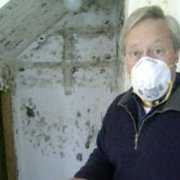The Mold Buffet
In order to grow, mold needs a food source, water, the right temperature, and time. What mold claims need in order to grow are litigation:
- boundless jury awards
- lack of standards for measuring mold spores’ effect on health
- room for interpretation in existing policy language,
- lack of knowledge by policyholders.
This article is meant to help remedy the last of those.
We’ll primarily address what the homeowner needs to know about mold in the insurance context. Mold has implications for commercial property, as well, with potential liability for owners, architects and engineers, contractors, maintenance firms, product manufacturers. Even tenants who fail to report a mold problem in a timely way. Your CIMA personal-insurance or commercial-insurance account executive will be happy to discuss your own risk exposures and concerns.
If you have a mold infestation on your property, it might be a covered loss. It depends, in part, on whether it was caused by a covered loss. More about that farther along; now let’s look at the problem and how it has spread.
In 2017, 6 percent of insured homes had a claim, according to ISO. Property damage, including theft, accounted for 98.1 percent of those claims. Changes in the percentage of each type of homeowners loss from one year to another are partially influenced by large fluctuations in the number and severity of weather-related events such as hurricanes and winter storms.
There are two ways of looking at losses: by the average number of claims filed per 100 policies (frequency) and by the average amount paid for each claim (severity). The loss category “water damage and freezing” includes damage caused by mold, if covered. Every state except Alaska, Arkansas, New York, North Carolina and Virginia has adopted an ISO mold limitation for homeowners insurance coverage, which allows insurers to exclude the coverage unless the condition results from a covered peril.
Personal Injury Difficult to Prove
Then, certain kinds of spores called mycotoxins are released in the air, and inhaled. Plaintiffs have alleged everything from minor allergic reactions to pulmonary hemorrhage and memory loss, as a result of airborne mycotoxins. In 1996, the Centers For Disease Control (CDC) first asserted a link between “stachybotrys chartarum” mold spores and pulmonary hemorrhage in infants in Cleveland, then withdrew the assertion.
There are no CDC or OSHA standards for “safe” levels of spores in the human body. Even if there were, determining the effects of exposure during a particular period of time — and potential liability for those effects — would be difficult or impossible unless blood samples were taken both before and after the exposure, for comparison.
Despite the lack of science, plaintiffs have been very successful. The big jackpot so far has been a $32 million award in Texas, against an insurer. The jury found that the insurer did not adjust a water-damage claim properly, allowing a mold infestation and resulting respiratory illness and memory loss to occur. Plaintiff Melinda Ballard survived, and founded the activist group called Policyholders of America. Celebrity sufferers such as Erin Brockovich and Ed McMahon have captured public attention.
Insurer’s Response to Mold Claims
Insurance companies have been responding to this increased liability much as they did with asbestos. Three insurers stopped writing homeowners coverage in Texas. Elsewhere, insurers sometimes are “clarifying” that existing policy language isn’t intended to cover property damage and/or liability resulting from mold. Others are considering or have adopted specific exclusions — with or without the opportunity to “buy back” the coverage.
On the commercial side, the Insurance Services Office (ISO) has approved endorsements to the commercial general liability, pollution liability, umbrella, owners and contractors protective liability and products/completed operations forms — all limiting, to some degree, the insurer’s responsibility for covering mold claims.
Insurers can choose whether or not to adopt the ISO-approved endorsements, or to “manuscript” their own. Insurers already have begun to adopt exclusions for mold. You should discuss your own circumstances with your account executive if you have a coverage question. (NOTE: If you are working with a contractor, make sure you are notified of any changes in the contractor’s liability protection; otherwise, your own protection could be compromised.)
Homeowners Insurance and Property Damage Resulting from Mold
If a mold infestation is discovered that requires extensive cleaning or replacement of building materials, under what circumstances would a claim be covered, or denied?
A claim might be covered if the mold resulted from a covered loss (for example, a water pipe leaked, or the roof was damaged and rain came in) unless the homeowner was negligent in allowing the mold to develop. Negligence would be involved if you, as the homeowner, did an inadequate cleanup of the water damage, or allowed mold to occur because ordinary maintenance was not done.
- Risk management of mold begins with your eyes and nose. Where could moisture get into your home?
- Check for clogged or missing gutters and downspouts, missing or damaged flashing or caulking, gaps between building materials, etc.
- Check your HVAC system periodically to make certain it is functioning properly, without condensation in areas where mold could develop. (Consider getting this done, along with routine maintenance, by a professional.)
- Use a dehumidifier
- Don’t have carpet in areas where moisture is likely.
- Have fans, vented to the outside, in your kitchen and baths.
- Check for moisture wherever there is plumbing, and around your water heater, in case there’s a small leak. Fix any leaks. Clean the area with hot water and detergent, then disinfect with a 10% solution of bleach in water.
- If your couch gets soaked because the window was open when the thunderstorm hit and you were gone, spread those cushions out and run those fans as long as it takes to get everything bone-dry.
- Check the grout in your tile work, and check the caulking everywhere. If they have deteriorated, moisture could be seeping through, and finding its way to some delicious food such as floor joists. You can prevent grout from deteriorating with various sealants from home improvement stores. Silicone caulk is more expensive than other kinds, but lasts much longer.
- If you haven’t done it already, replace those rubber hoses on your washing machine with flexible steel ones. Rubber eventually deteriorates, and those hoses are under constant pressure. Of course you shut off the water to your washer when you leave for vacation (right?), but the rubber hoses could fail even while you’re asleep at home one night, and your basement be flooded by the time you wake up. Getting up all that mold-friendly moisture would be a chore you don’t need.
- Check for sunken areas in baseboards or trim, or separation of the baseboard from the floor. Check for soft spots or blisters in plaster or drywall.
- When you repaint, use a mold-inhibiting primer.
- Under the house, check for “fruit bodies,” which are gray, brown or black growths on the underside of wooden flooring; they indicate that the wood has rotted.
- If you see white, brown or black vines going from the soil around your house to the structure itself, they may be conduits for a fungus that has grown in the soil, and should be removed.
Realize you aren’t going to remove all mold from your environment. A study by the Colorado State University Department of Environmental Health Services found that some mold exists even in leather and fabric upholstery of new furniture, and on hard surfaces that are cleaned regularly.
If you do have water damage that is under your deductible, you should report the claim anyway, unless you are absolutely sure you have completely dried out the affected area. If your insurance carrier oversees the cleanup and mold develops later because cleanup was inadequate, the carrier will be hard-pressed to deny the claim. If the carrier is not involved, however, and mold develops, the subsequent claim likely will be denied.


 ©Today's Homeowner
©Today's Homeowner 



